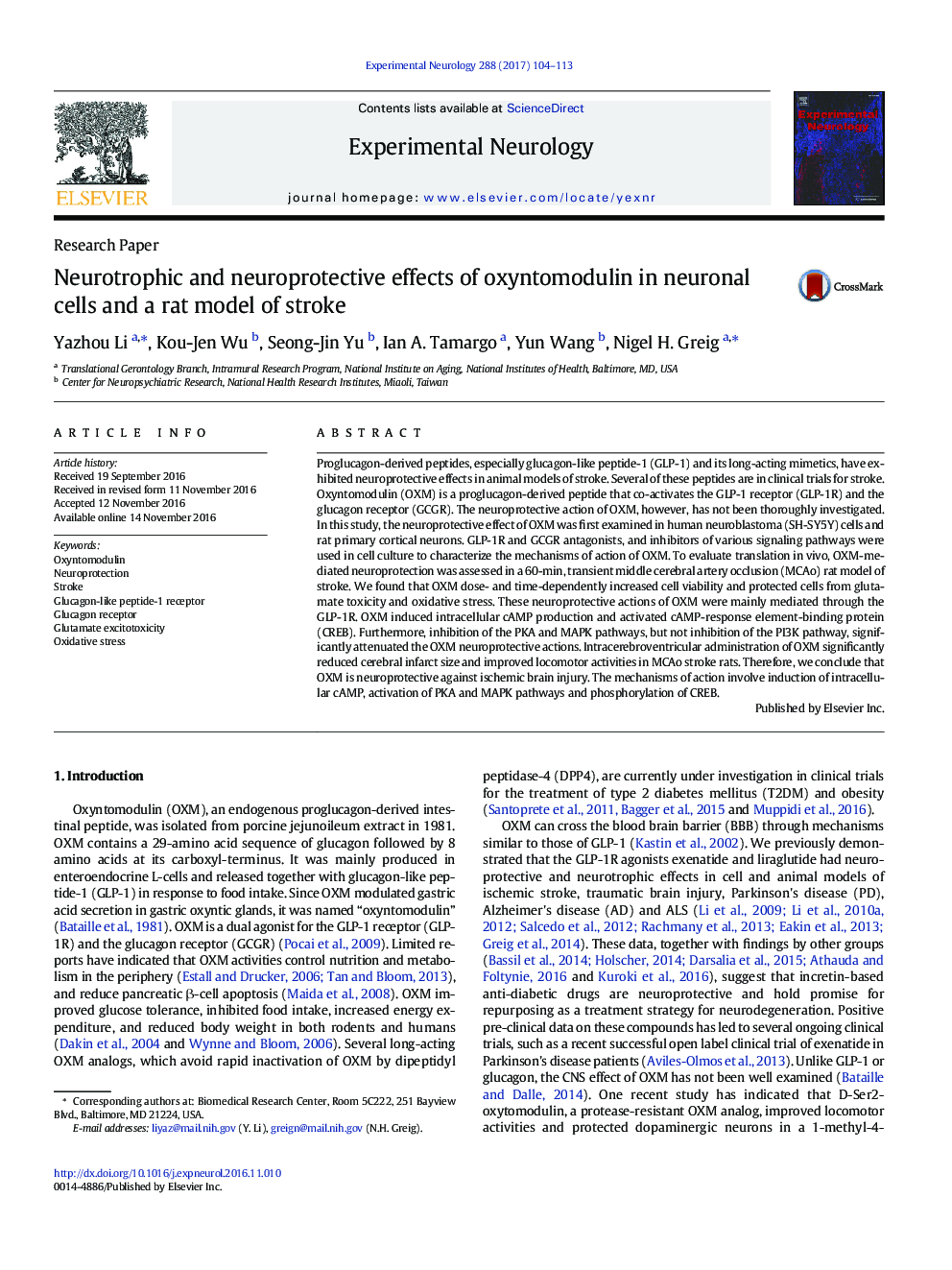| کد مقاله | کد نشریه | سال انتشار | مقاله انگلیسی | نسخه تمام متن |
|---|---|---|---|---|
| 5629199 | 1580151 | 2017 | 10 صفحه PDF | دانلود رایگان |
- We evaluated the neurotrophic and neuroprotective actions of OXM in neuronal cultures and in an ischemic stroke model.
- OXM provided neurotrophic properties in immortal human SH-SY5Y neuronal cells - elevating cAMP levels and pCREB.
- OXM provided neuroprotection against glutamate excitotoxicity and oxidative stress injury in SH-SY5Y cells and rat primary neurons.
- OXM actions were primarily mediated by the GLP-1R but not GCGR, and involved the PKA and MAPK but not PI3K pathway.
- OXM significantly reduced cerebral infarct size and improved locomotor activities in a transient MCAo rat model of stroke.
Proglucagon-derived peptides, especially glucagon-like peptide-1 (GLP-1) and its long-acting mimetics, have exhibited neuroprotective effects in animal models of stroke. Several of these peptides are in clinical trials for stroke. Oxyntomodulin (OXM) is a proglucagon-derived peptide that co-activates the GLP-1 receptor (GLP-1R) and the glucagon receptor (GCGR). The neuroprotective action of OXM, however, has not been thoroughly investigated. In this study, the neuroprotective effect of OXM was first examined in human neuroblastoma (SH-SY5Y) cells and rat primary cortical neurons. GLP-1R and GCGR antagonists, and inhibitors of various signaling pathways were used in cell culture to characterize the mechanisms of action of OXM. To evaluate translation in vivo, OXM-mediated neuroprotection was assessed in a 60-min, transient middle cerebral artery occlusion (MCAo) rat model of stroke. We found that OXM dose- and time-dependently increased cell viability and protected cells from glutamate toxicity and oxidative stress. These neuroprotective actions of OXM were mainly mediated through the GLP-1R. OXM induced intracellular cAMP production and activated cAMP-response element-binding protein (CREB). Furthermore, inhibition of the PKA and MAPK pathways, but not inhibition of the PI3K pathway, significantly attenuated the OXM neuroprotective actions. Intracerebroventricular administration of OXM significantly reduced cerebral infarct size and improved locomotor activities in MCAo stroke rats. Therefore, we conclude that OXM is neuroprotective against ischemic brain injury. The mechanisms of action involve induction of intracellular cAMP, activation of PKA and MAPK pathways and phosphorylation of CREB.
148
Journal: Experimental Neurology - Volume 288, February 2017, Pages 104-113
